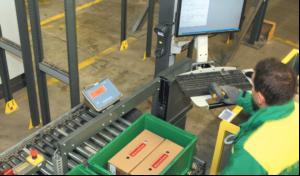| Home> | Automation | >Conveying components | >Top tips for WMS success |
ARTICLE
Top tips for WMS success
12 December 2012
What should you look for in your WMS? Craig Rollason, head of sales and marketing for KNAPP UK, gives his advice. When buying a car, there is something reassuring about being able to sit in the driver's seat and, of c

What should you look for in your WMS?
Craig Rollason, head of sales and
marketing for KNAPP UK, gives his advice.
When buying a car, there is something reassuring about being able to sit in the driver's seat and, of course, kick the tyres.When buying an automated handling system, the flexibility, robustness, serviceability and ergonomic features of the equipment are obviously key considerations.
Equally important are the intangible qualities of throughput, lifetime cost and - critically - software performance. In short, superb hardware is useless without intelligent and reliable software to power it.
So what should you look for in your automated system's WMS?
1 Independence Make sure you buy independently validated products that have all the features you currently require or expect to need as your business grows. Additional features such as tracking & tracing, forklift control and workforce management modules that determine productivity bonuses can be extremely useful.
2 Future-proofing Make sure the WMS is future-proof in terms of how the latest technology - such as smartphones and communication methods - relate to your business. Does the WMS meet current and future legal requirements of your industry, particularly in sectors such as food and pharmaceuticals?
3 Supplier issues Look beyond the WMS to the supplier. Seek out suppliers who are most experienced - especially in your sector - and who are committed to continuous investment in software. If you are buying the WMS for a brand-new or significantly upgraded system, you will benefit from purchasing the software and hardware from a system integrator. This avoids the unpleasant scenario in which the buck for an ineffective system is passed between the software supplier and hardware supplier.
When buying a car, there is something reassuring about being able to sit in the driver's seat and, of course, kick the tyres.When buying an automated handling system, the flexibility, robustness, serviceability and ergonomic features of the equipment are obviously key considerations.
Equally important are the intangible qualities of throughput, lifetime cost and - critically - software performance. In short, superb hardware is useless without intelligent and reliable software to power it.
So what should you look for in your automated system's WMS?
1 Independence Make sure you buy independently validated products that have all the features you currently require or expect to need as your business grows. Additional features such as tracking & tracing, forklift control and workforce management modules that determine productivity bonuses can be extremely useful.
2 Future-proofing Make sure the WMS is future-proof in terms of how the latest technology - such as smartphones and communication methods - relate to your business. Does the WMS meet current and future legal requirements of your industry, particularly in sectors such as food and pharmaceuticals?
3 Supplier issues Look beyond the WMS to the supplier. Seek out suppliers who are most experienced - especially in your sector - and who are committed to continuous investment in software. If you are buying the WMS for a brand-new or significantly upgraded system, you will benefit from purchasing the software and hardware from a system integrator. This avoids the unpleasant scenario in which the buck for an ineffective system is passed between the software supplier and hardware supplier.
MORE FROM THIS COMPANY
OTHER ARTICLES IN THIS SECTION










/GRABOMATIC LOGO-tn.jpg)
















